“Baby Killer.”
This is one of the names former Colonel Bill Hansen, 72, remembers being called after returning from his service in the Vietnam War.
“We were vilified,” Hansen said of the treatment he and other Vietnam Veterans went through after they came back from war.
Almost three decades later, when planes struck the Twin Towers and the Pentagon Sept. 11, 2001, the American Government sprang to action in defense of the country.
“When 9/11 happened and we started to deploy troops, a lot of people, especially those of us who were Vietnam and Desert Storm Veterans, said, ‘We are not going to let happen to these kids what happened to us,’” Hansen said.
With this resolution in the forefront of his mind, Hansen and Jon Malovich, an outdoorsman whose father served as a Marine in the Vietnam War, formed the Warriors Afield Legacy Foundation. This non-profit foundation is dedicated to helping veterans of today connect with the veterans of the past and discover the healing benefits of nature through outdoor activities such as hunting, fishing and off-roading.
“The idea [of the foundation] is two-fold,” Malovich said. “It’s the older generation of veterans giving back and passing on the legacy of taking care of one another to the younger generation of veterans – that’s the part of the legacy piece in the name – but also, those who are in the outdoor industry and that do recreate in the outdoors [being able to share] that legacy of what we enjoy with combat veterans and teaching them to enjoy the outdoors.”
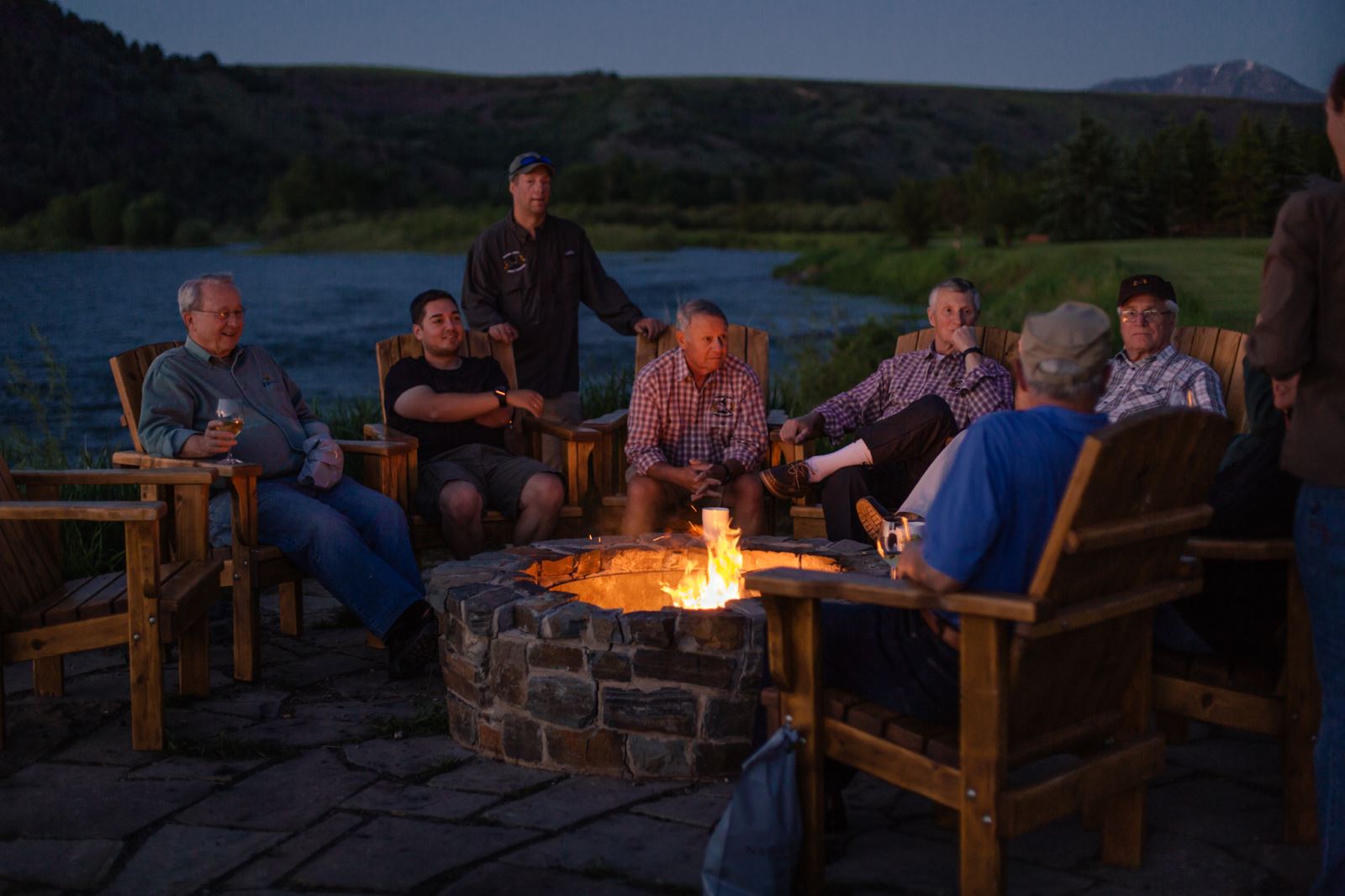
The Generous WWII Rancher
Hansen said their work for veterans began with golfing but expanded with the aid of some very generous individuals. The program they have now began with the help of one of those generous individuals – a WWII veteran who owned a 16,000-acre cattle ranch in Utah.
“The ranch owner said, ‘Bill, I want to do something – what can I do?’” Hansen recalled. “I facetiously said, ‘Give me your ranch for a week.’ He turned to his ranch foreman and said, ‘Let’s do it.’”
Hansen, who had not expected the ranch owner to agree to the request, said he then turned his thoughts to what they would be able to do with the ranch for that amount of time in a way that would benefit other veterans most.
“If you are in Washington DC… or San Antonio, Texas… there are all kinds of things to do,” he said. “[Veterans] can eat at some of the greatest steakhouses and restaurants free every night. If they complete a [certain] golf instruction package, they get a custom-made set of sticks, but when they are released, if you come home to the Mountain West, there are not a lot of those kinds of things.”
Hansen and Malovich connected with the United States Department of Veterans Affairs to identify young men and women who would benefit from outdoor activities such as hunting, fishing and off-roading while partnering with some older veterans who could act as mentors for them. They then established what was to be the first of many retreats for combat veterans, utilizing their time with the ranch.
The WWII veteran was the first to donate his land to WALF’s program, but he certainly was not the last. Natural Retreats, one particularly helpful outdoors company, has assisted WALF with events for the veterans and with fundraising opportunities.
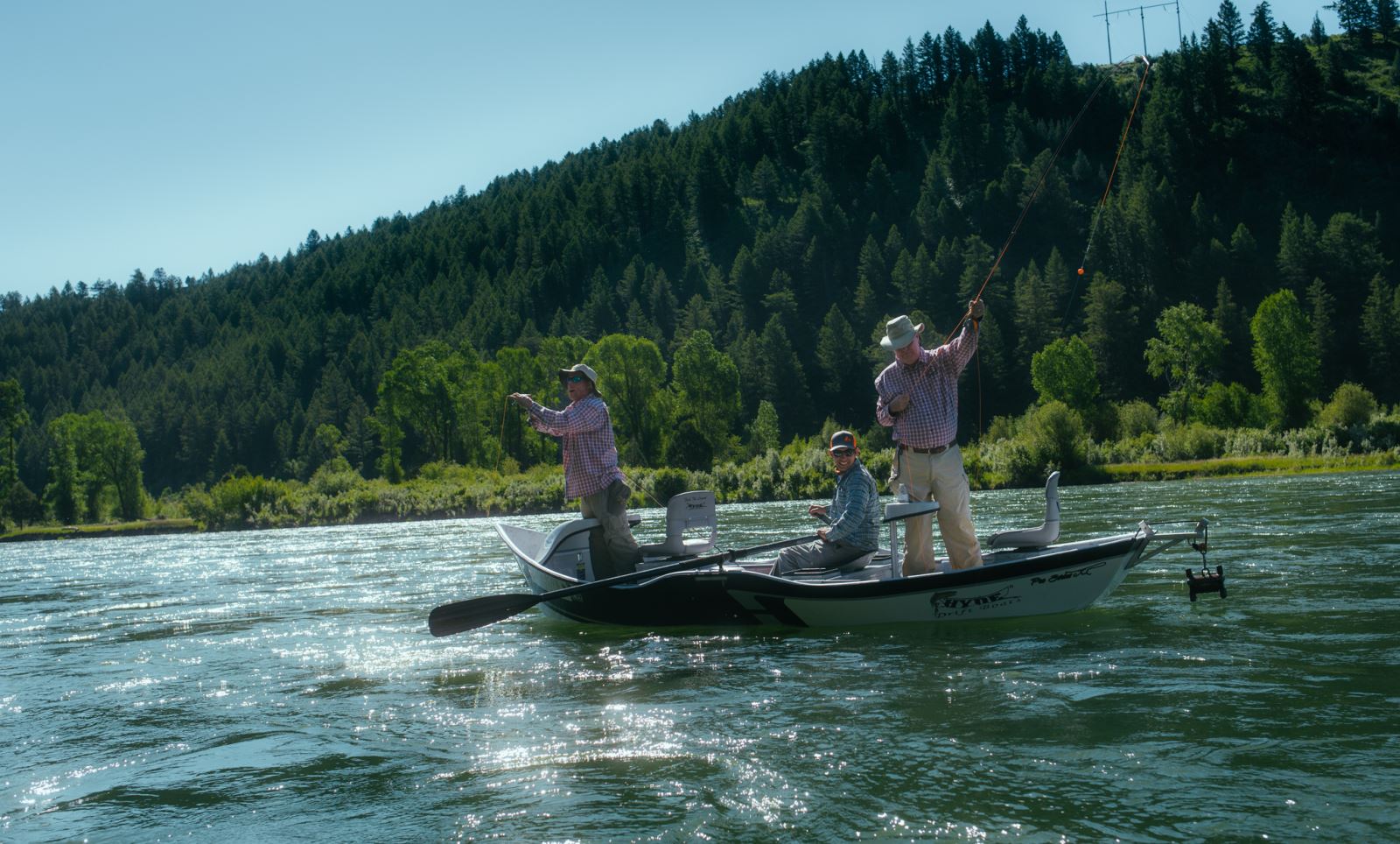
The Protégé-mentor Relationship
Hansen and Malovich both said matching up the young veterans with mentors is a key aspect of their program.
“It becomes a protégé-mentor relationship where the old guy works with the young guy to let him know that even though he’s sustained an injury or life seems difficult, things will go on and continue to get better just like it has for them,” Malovich said.
Often, the mentors who participate in the program were high-ranking military officials, ranging from colonels to three-star generals, but they keep it on a first-name basis with the younger veterans they are mentoring. All of the mentors who participate in the program come in at their own expense because they want to make a difference.
“[The mentors] understand what [the young veterans] are going through, so that’s where the real therapy happens,” Malovich said.
Johnathan Purser, a veteran who sustained serious burns during his time in the army, said he still keeps in contact with his mentor.
“We were matched up off of similarities,” Purser said. “[My mentor] was an aviator and how I got into the crispy critter club was I was in a helicopter crash. We bumped rides like you would in a taxi, but in helicopters. [We have] a lot of similarities so enjoy talking.”
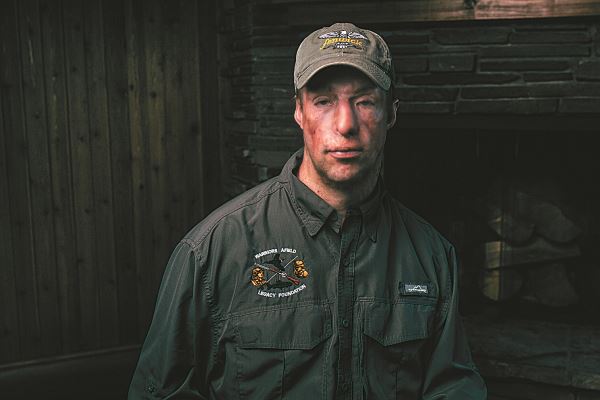
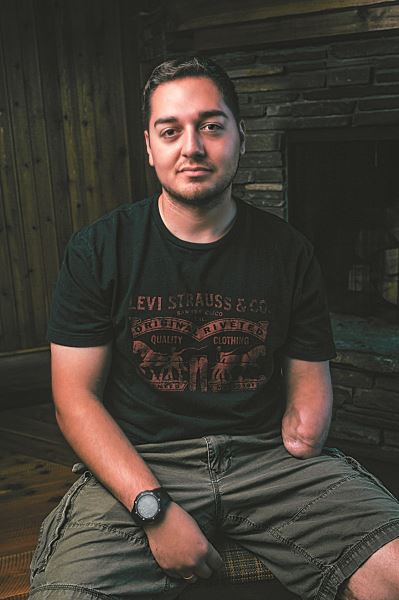 Nature’s Natural Therapy
Nature’s Natural Therapy
The program consists of three days of outdoor activities for 6-12 combat veterans.
“It shows them they can do some things that they didn’t think they could do,” Hansen said. “Carlos Lugo is an arm amputee. He doesn’t have any kids right now, but he’ll be able to teach a son or daughter to fish when he didn’t think he could.”
Lugo, who returned from Afghanistan in 2013 and is currently living in Idaho Falls, said he hadn’t ever had the chance to fly fish and hunt until his VA officer helped him get into contact with Hansen.
“I never grew up around hunting or fishing or stuff like that, so it got me with other vets, but it also got me learning how to do the stuff I’m interested in,” Lugo said. “It’s good relaxation to enjoy a good time.”
Bryant Jacobs, an army veteran who lost his leg after a tour in Iraq, said he met Lugo last year at a WALF event.
“We grew up in California so we deep sea fished, but it’s all different so you get to learn different things – especially being a new amputee, you have to learn how to get in the boat again, you have to learn how to do everything again, but here is a bunch of guys saying ‘Let’s figure this out together,’” Jacobs said. “You can’t get that anywhere else.”
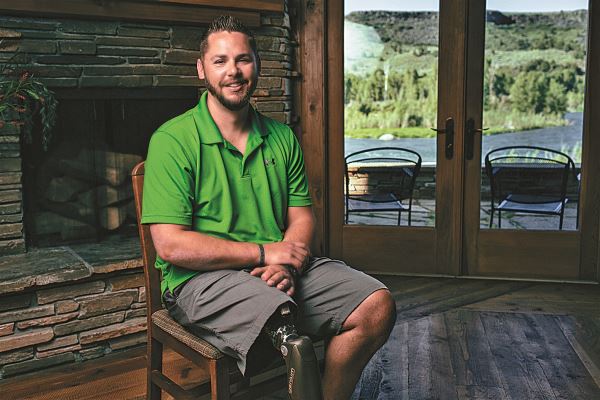
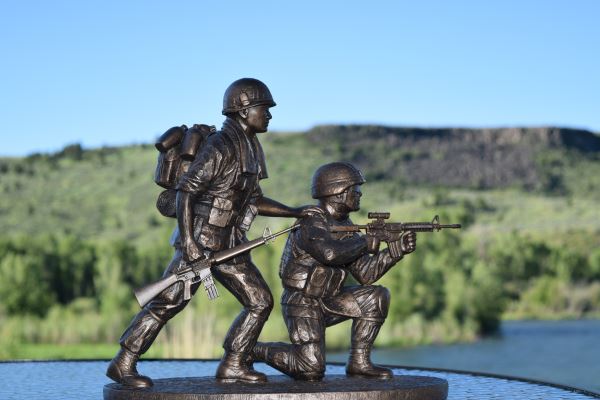 The Legacy of Honor Sculpture
The Legacy of Honor Sculpture
This sculpture is one of 35 made, and it is meant to represent what the Warriors Afield Legacy Foundation stands for.
The man standing in the back, created in the likeness of Hansen at age 25, is a Vietnam Veteran with a WWII Korea-Vietnam steel helmet with the ubiquitous mosquito repellent strapped to the side. Plastic canteens dangle from the backpack as the soldier proudly holds the old M16. Dog tags hang around the soldier’s neck and are laced into his shoes in case of dismemberment.
The old veteran’s hand rests on the young warrior of today’s shoulder as if to say, “We’ve got your back.”
The soldier of today is equipped with knee pads, a camelback bladder, safety glasses and the new M4.
Hansen said that someday it will be time for the soldier in front to become the one watching out for the new generation, as “war will surely come again.”
Veterans: You Are Not Alone
There are many places veterans who have returned from war can turn to for help. Warriors Afield Legacy Foundation is one such source geared particularly toward those veterans who have been in combat.
Warriors can be nominated by family members to join the program or can contact the foundation directly at warriorsafieldlegacyfoundation.com. Their only requirement is that the veteran needs to have been through some type of combat situation, including having come in contact with gunfire or having dealt with an explosion.
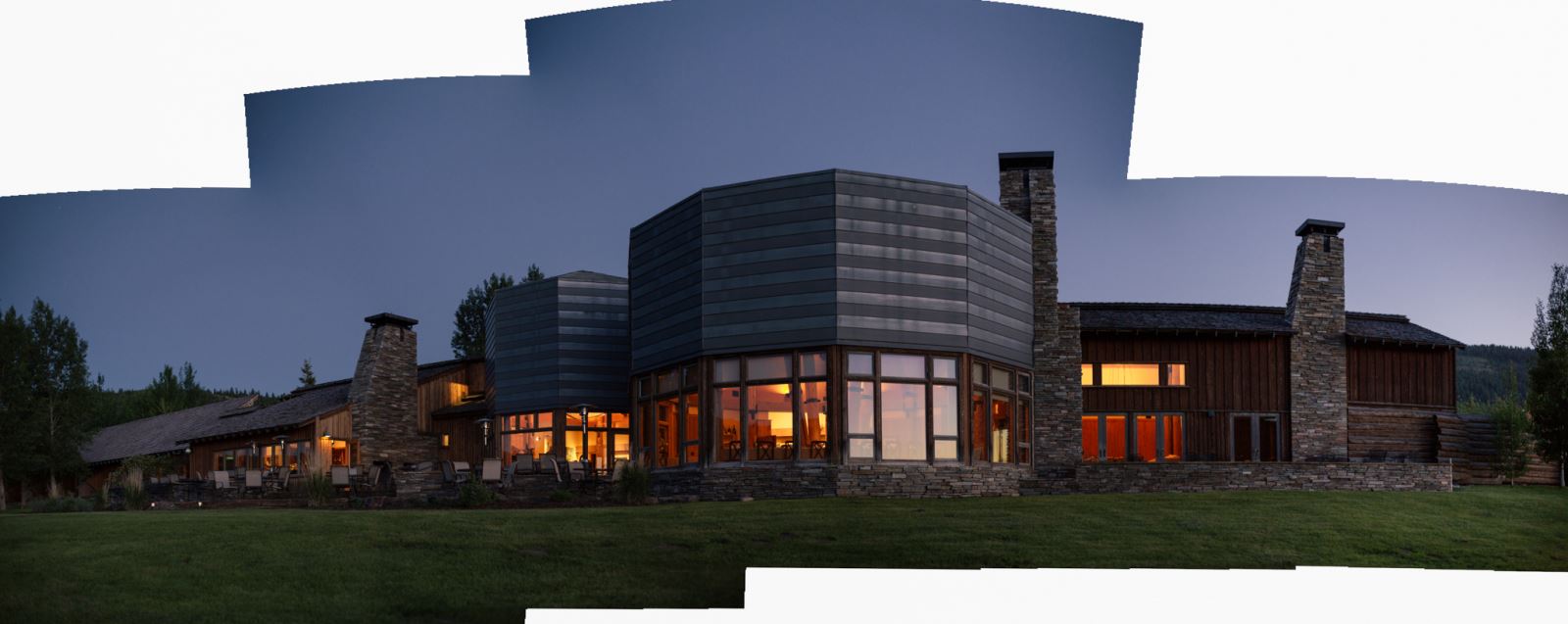
Photos courtesy of Doug Jackson (jacksondwj.com)